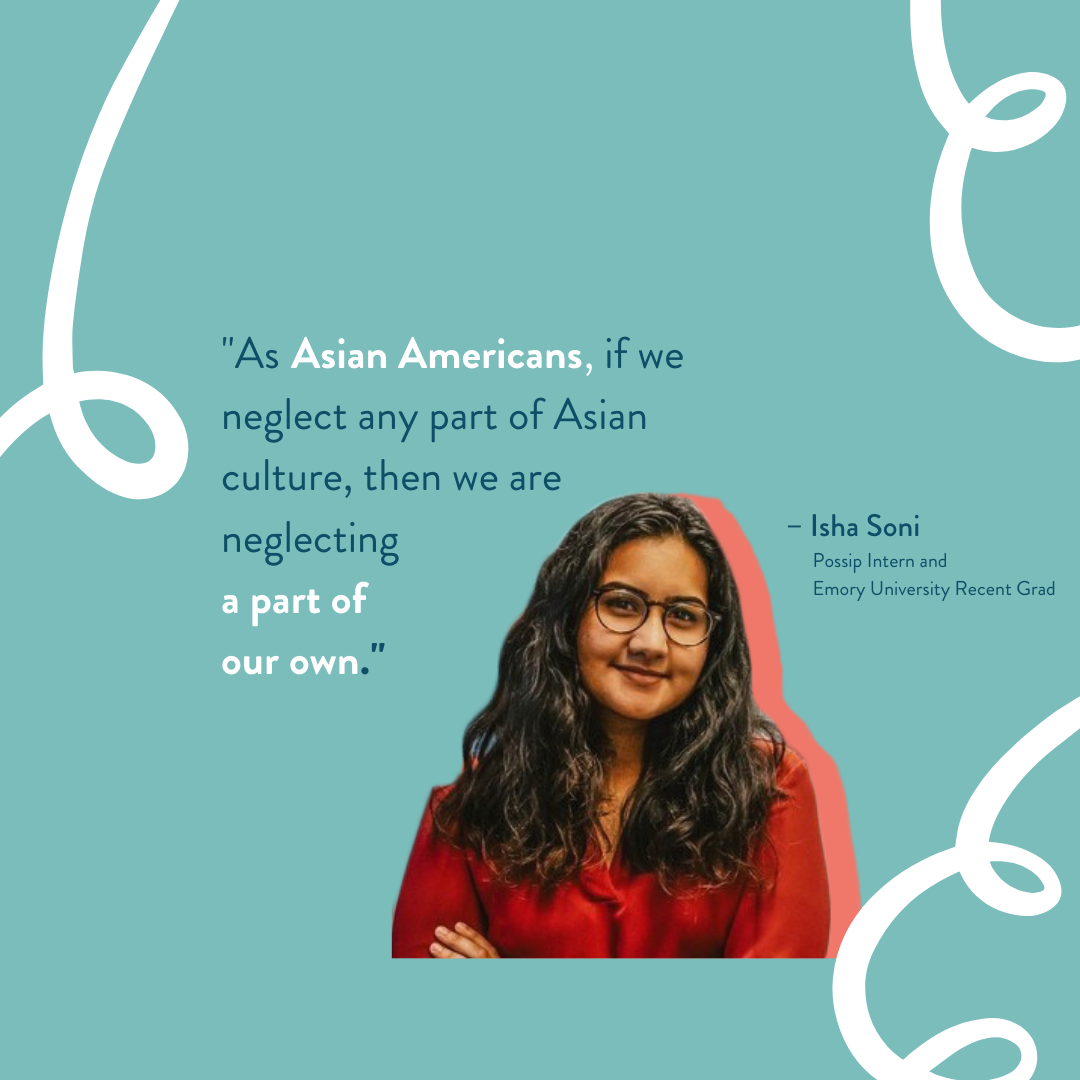Possip intern and Emory University senior, Isha Soni, reflects on including South Asians in AAPI Heritage Month.
In elementary school, when I told people I was Indian and from Asia, it always came with some kind of explanation of what it means to be Asian. Sometimes the explanation came from me, but I would often hear my peers tell me, “That’s not really Asian.”
The only context that most of my peers had heard of any type of Indian person was when we were being taught American History. They weren’t thinking of me, they were thinking of Indigenous Americans. It was hard to feel like my identity did not exist to them. With no mention of my cultural identity in school, I did not understand how to explain to them that there was another group of Indian people on the other side of the world in Asia. They seemed to understand who Asian people were and what Asian culture looked like, but I did not fit their pre-existing definitions of either of those. So, I was told, time and time again, that I was not Asian.
As I got older, South Asian culture became more and more prevalent in the United States.
Indian restaurants were everywhere, I saw more South Asians represented in the media. The population of South Asians in the US more than doubled in a decade. Still, when I got to college, there were two clubs for Asian American Advocacy: one for South Asian students and one for everyone else. As it turns out, the data backs up my anecdotal elementary school experience. Around 45% of White Americans believe that Indian and Pakistani people are not Asian. These sentiments are shared, in part, by many Asian Americans themselves. 15% of Asian Americans believe that South Asians, such as Indians and Pakistanis, are not Asian.
There continues to be a distinct line drawn between South Asians and East Asians. But, I check the “Asian” box when any paperwork asks about my ethnicity. I consider Asian as part of my identity partially because I don’t really have another choice. If I don’t include being Asian, my cultural identity gets lost; there is no South Asian American Month.
Violence against South Asians in the United States continues to grow as violence against East and Southeast Asians does.
Initiatives such as AAPI Heritage Month can help educate people about our culture. However, there first needs to be a concerted effort of recognizing, celebrating, and include South Asians in AAPI Heritage Month.
There must be an effort to celebrate South Asian culture as Asian American culture.
The first thing to know is this: the words South Asian and Desi are often interchangeable, but most South Asian people I know consider themselves Desi first.
A few ways to celebrate Desi culture in schools:
- Introduce students to key South Asian Holidays. Some examples include Diwali, Durga Puja, and Eid.
- Let students try South Asian food from local Indian, Bengali, and Nepali restaurants.
- Many South Asian students often take cultural dance classes. Give them a space to showcase their culture with dance or music, or find a YouTube video that does the same.
- Teach students about aspects of South Asian religions such as Hinduism, Islam, and Sikhism.
- Expose them to traditional South Asian clothes such as sarees, kurtis, and daura.
- Discuss South Asian practices that many Americans know about, such as yoga and meditation, as it relates to South Asian culture.
South Asian culture deserves to not only be acknowledged, but celebrated along with all of the other cultures that make Asia a complex and diverse continent. As Asian Americans, if we neglect any part of Asian culture, then we are neglecting a part of our own. Educating people about all types of Asian American culture during AAPI Heritage Month is important, and it only works if we are deliberate about making the time and space to do so.
Read more Possip team stories on our blog.





